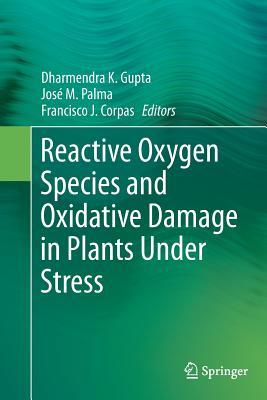Download Reactive Oxygen Species and Oxidative Damage in Plants Under Stress - Dharmendra Kumar Gupta file in ePub
Related searches:
ROS Function in Redox Signaling and Oxidative Stress - NCBI - NIH
Reactive Oxygen Species and Oxidative Damage in Plants Under Stress
[Reactive oxygen species and oxidative stress] - Pub Med
The Role of the Reactive Oxygen Species and Oxidative Stress in
Reactive Oxygen Species, Oxidative Damage and Cell Death
Reactive oxygen species, oxidative signaling and the regulation of
REACTIVE OXYGEN SPECIES: Metabolism, Oxidative Stress, and
Reactive Oxygen Species: The Good and the Bad IntechOpen
Approaches for Reactive Oxygen Species and Oxidative - MDPI
Reactive oxygen species and oxidative DNA damage
Reactive oxygen species: metabolism, oxidative stress, and
Reactive Oxygen Species, Oxidative Damage, and Antioxidative
Reactive oxygen species: Oxidative damage and pathogenesis
Oxidative Potential of Particulate Matter and Generation of Reactive
Reactive Oxygen Species and oxidative stress - YouTube
Underlying mechanisms of reactive oxygen species and oxidative
Oxidative stress and protection against reactive oxygen species in
Reactive Oxygen Species and ETC - AK Lectures
The role of reactive oxygen species and oxidative stress in
Approaches for Reactive Oxygen Species and Oxidative Stress
Reactive oxygen species, oxidative stress, glaucoma and
Reactive Oxygen Species, Vascular Oxidative Stress, and Redox
[PDF] Reactive Oxygen Species , Oxidative stress and ROS
Alcohol, Oxidative Stress, and Free Radical Damage
17 nov 2017 generally, endogenous and physiological reactive oxygen species (ros) are mainly generated in the oxidative reaction process of mitochondrial.
Enhanced ros production during oxidative stress leads to oxidation of proteins, lipid peroxidation, enzyme.
Reactive oxygen species (ros) are byproducts of aerobic metabolism. Ros include the superoxide anion (o2−), hydrogen peroxide (h2o2), and hydroxyl.
Oxidative stress defined as an excessive production of reactive oxygen species (ros) surpassing existing antioxidative defense mechanisms plays a critical role in the development and progression of diabetic vascular complications including nephropathy. Over production of ros in diabetic milieu is bo reactive oxygen species and oxidative stress.
The reactive oxygen species (ros) form under normal physiological conditions and may have both beneficial and harmful role.
Abstract several reactive oxygen species (ros) are continuously produced in plants as byproducts of aerobic metabolism.
Retinal function is very sensitive to fluctuations in haemoglobin oxygen concentration. 18 metabolism of oxygen produces reactive oxygen species 14 which form under normal physiological conditions and can be beneficial. 4 low levels of ros production, produced mainly by mitochondria, are required to maintain physiological functions including.
However, a role of ros/oxidative stress in chronic kidney fibrosis following i/r injury remains to be defined.
8 may 2016 this video describe what are reactive oxygen species (ros)�how they are generated and what could be the harmful effect of ros on our body.
Reactive oxygen species: metabolism, oxidative stress, and signal transduction several reactive oxygen species (ros) are continuously produced in plants as byproducts of aerobic metabolism. Depending on the nature of the ros species, some are highly toxic and rapidly detoxified by various cellular enzymatic and nonenzymatic mechanisms.
All some reactive oxygen species such as superoxide and hydrogen peroxide have beneficial effects (at physiological levels), some reactive oxygen species, such as the hydroxyl radical, react and form bonds with almost all organic molecules in the body. As a result, this particular species is exclusively deleterious when produced within a cell.
Oxidative stress is involved in the aetiology of defective embryo development. Reactive oxygen species (ros) may originate from embryo metabolism.
Abstract metabolism of oxygen by cells generates potentially deleterious reactive oxygen species (ros). Under normal conditions the rate and magnitude of oxidant formation is balanced by the rate of oxidant elimination.
27 sep 2019 reactive oxygen species (ros) play a central role in adverse health effects of atmospheric particulate matter (pm).
Oxidative damage has been linked to aging and a long list of medical conditions such as alcoholic liver disease, emphysema, ischemia, diabetes, cervical cancer.
Reactive oxygen species (ros) are produced as a normal product of plant cellular metabolism. Various environmental stresses lead to excessive production of ros causing progressive oxidative damage and ultimately cell death. Despite their destructive activity, they are well-described second messengers in a variety of cellular processes, including conferment of tolerance to various environmental.
28 apr 2011 oxidative stress is defined as an imbalance between the production of reactive oxygen species (ros) and the antioxidant capacity of the cell.
Previous studies have reported that oxidative stress induced by ros generation is one of the mechanisms responsible for the toxic effect of carbon nanomaterials.
Oxidative stress (os) and excessive reactive oxygen species (ros) production have been implicated in many neurological pathologies, including acute.
Reactive oxygen species (ros) are generated as by-products of aerobic respiration and metabolism. Mammalian cells have evolved a variety of enzymatic mechanisms to control ros production, one of the central elements in signal transduction pathways involved in cell proliferation, differentiation and apoptosis.
At high concentrations (oxidative stress), the various ros can certainly behave as extremely reactive molecules.


Post Your Comments: